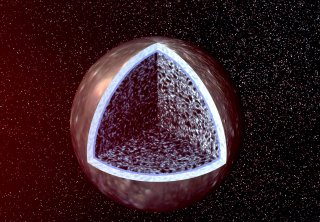Which Moons in Our Solar System Have Best Chance for Life?
After decades of peering out into our vast solar system, we still have no evidence that life exists outside Earth. Perhaps, instead of focusing our attention on planets, more efforts should be placed on the many moons within our solar system. In fact, there’s already plenty of evidence that several moons of Jupiter and Saturn may possess environments that are suitable for at least primitive life.
After decades of peering out into our vast solar system, we still have no evidence that life exists outside Earth.
Perhaps, instead of focusing our attention on planets, more efforts should be placed on the many moons within our solar system. In fact, there’s already plenty of evidence that several moons of Jupiter and Saturn may possess environments that are suitable for at least primitive life.
For most astronomers, Saturn’s moon Enceladus tops the list in terms of having just the right conditions to host life. The sixth largest of Saturn’s 62 confirmed moons, Enceladus boasts a massive saltwater ocean hidden beneath its icy surface.
There are no detectable signs of life yet, but scientists are immensely intrigued because of the presence of liquid water and organic molecules, which are two of the key ingredients to support life as we know it.
Scientists believe these organic compounds originate in the moon’s core, and then flow into the subsurface ocean via hydrothermal vents, before shooting out through the crust’s cracks.
Another strong candidate is Titan, Saturn’s largest moon. It is the only world in the solar system, other than Earth, that is known to have liquid lakes. These lakes, however, aren’t of the ordinary water variety – these are reservoirs of ethane and methane, or liquid natural gas.
Titan is often thought to have an environment similar to that on primordial Earth. Although methane-based life forms are only seen as being hypothetical today, scientists have modeled certain conditions under which they could exist and possibly thrive.
Moving on to Jupiter, Europa is the sixth-largest moon in the solar system. Data points toward the conclusion that there are in fact saltwater oceans beneath its 10-mile-thick icy surface. In fact, some estimates have Europa holding more liquid water than all of Earth’s oceans combined.
Europa is also thought to have an internal energy source from radioactive decay. This has led to the theory that life may exist in conditions that are similar to that of Earth’s deep-sea hydrothermal vents.
As for two other similar-sized moons of Jupiter – Ganymede and Callisto – they may also have subsurface liquid oceans, which are sandwiched between low-pressure surface ice and high-pressure ice phases deep in their interiors. Ganymede is probably the more intriguing of the two, as it has an intrinsic magnetic field, likely generated in a molten iron core.
Ethen Kim Lieser is a Tech Editor who has held posts at Google, The Korea Herald, Lincoln Journal Star, AsianWeek and Arirang TV. He lives in Minneapolis with his wife and two cats.

